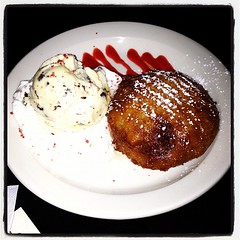 You probably don’t notice it. It flies under the radar. The phenomenon of which I speak? The organization of the beer fridge in bottle shops.
You probably don’t notice it. It flies under the radar. The phenomenon of which I speak? The organization of the beer fridge in bottle shops.
To start this discussion, let’s examine the way wine is organized in most any given bottle shop or market. You walk in and you see shelf-talkers or hanging signs that all have a varietal on them. “Cabernet Sauvignon” is over here, “Pinot Noir” is over there, etc, etc, so on and so forth. Region and producer are most often ignored in favor of easy categorization.
The beer fridge however, tends to reveal a bit more variation. If you go to a supermarket, you’ll most often find a wall of two or three macrobrewer products (in many different packaging formats) that create the banner effect these companies covet in such retail outlets. What craft beer they carry tends to be organized by brewery. This of course applies only where they carry more than one beer from a given brewery.
Where we see a bit more variation is in bottle shops (those places whose focus is beer, wine and spirits). It is in these stores that the wine approach sometimes takes over the beer fridge. Rather than seeing all of a brewery’s product in one place, things get spread out by style. Tripels over here, IPA’s over there, Stouts all in one place, etc, etc, so on and so forth.
The question becomes, what to make of this? Having seen the brand-building power of social media in the craft beer world, I can’t help but worry a bit about the effect that organization by style may have. As far as wine goes, people tend to purchase by varietal, rather than by winemaker. In beer however, people still base their purchases heavily upon brewery.
If you enter a shop organized by style and want to buy a couple things from Ballast Point, you have to go to the IPA section to get Sculpin and the Porter section to get Black Marlin. Not good for the consumer, not good for the brewery. Obviously, if you’re looking to try a bunch of IPA, then its easier if the beer is organized by style, but I don’t believe such organization is good for craft brewers in the long term.
Organization by style completely destroys brand equity in the eyes and mind of the consumer. Rather than recognizing a bunch of beers from a given brewery, all the consumer sees is a bunch of Pale Ales. Breweries all have their own strengths and their own unique personalities. Many of them have used Social Media to let consumers get to know them, their philosophies and their personalities. They have spent a tremendous amount of time and resources defining themselves to the consumer.
Working in the beer industry, I find that more people ask what beers are available from “Brewery X” at a given time rather than what beers of a particular style are available. This is especially true at better beer bars, whose focus is a variety of style. You’re unlikely to find more than one Witbier or Porter on tap. However, customers consistently ask questions like, “What do you have from Stone?” or “What’s on tap from Russian River?” These and many other breweries have built a reputation for brewing excellent beer and customers will often drink whatever beer happens to be available from that brewery, regardless of style.
When bottle shops spread beer out by style, they degrade this brand equity and unknowingly move beer consumers into a frame of mind that mirrors wine consumers. Brand starts to matter less than style. Craft brewers and sellers of craft beer must be aware of this phenomenon and fight it. Craft brewers need to maintain brand equity. Sellers of craft beer must realize that they can leverage that equity to sell more beer. Put a brewery’s beer all in one place and you’ll sell more of that brewery’s beer. Do this for every brewery and the math does itself. You sell more beer and you create customers that are more loyal to a given brewery and a given bottle shop. It makes sense for everyone.
Photo Credit: Mike Beningo







